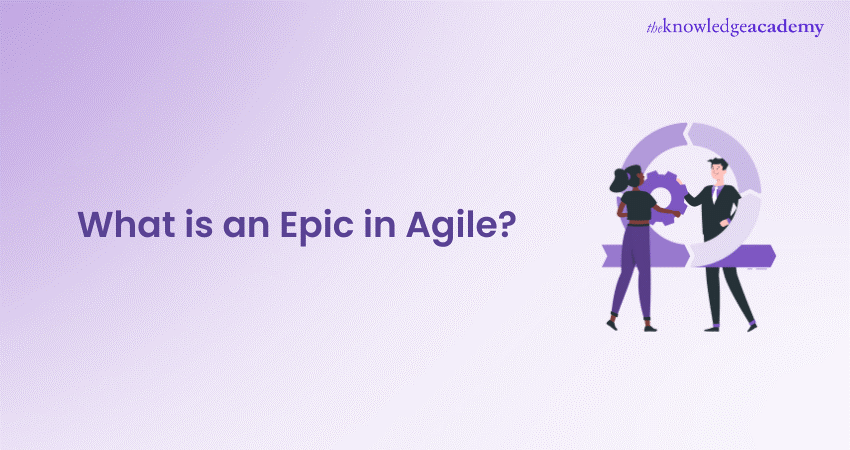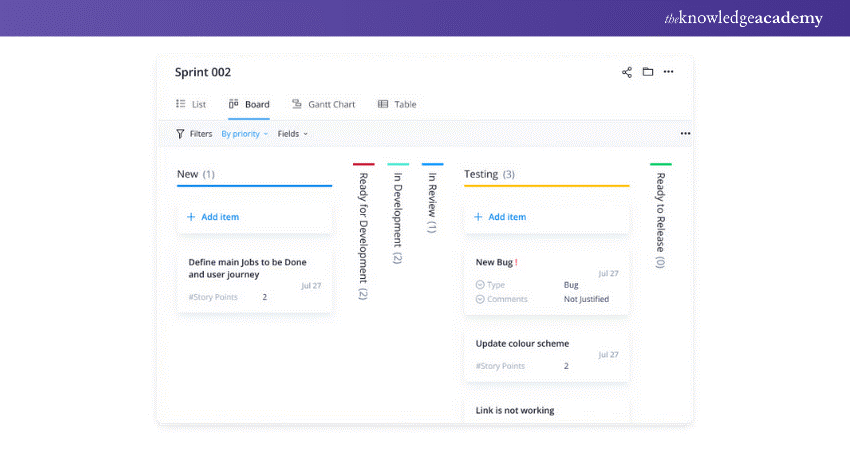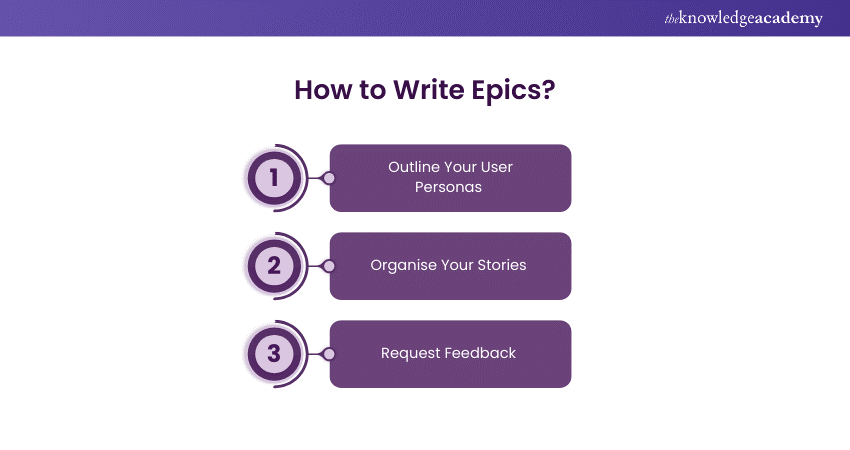We may not have the course you’re looking for. If you enquire or give us a call on +971 8000311193 and speak to our training experts, we may still be able to help with your training requirements.
Training Outcomes Within Your Budget!
We ensure quality, budget-alignment, and timely delivery by our expert instructors.

Are you struggling to manage large, complex projects effectively in Agile? Introducing Agile Epics! These are extensive bodies of work that can be divided into smaller, manageable tasks called user stories. It represents a significant feature, function, or strategic goal that teams aim to deliver based on customer or business needs.
Unlike user stories, which focus on specific tasks, Epics provide a broader perspective, helping teams maintain alignment with larger goals. Want to know how to effectively manage and execute Epics? Dive into the details of Agile Epics in this blog and optimise your Project Management approach!
Table of Contents
1) What is an Epic?
2) Agile Epic
3) How Does an Epic Fit into Agile Development?
4) Benefits of Epics
5) How to Write Epics?
6) Agile Epic Example
7) Conclusion
What is an Epic?
An Epic is a large collection of user stories in agile development that align with a broader strategic objective. When multiple Epics share a common goal, they are grouped under a larger business objective called a theme. Additionally, a user story is designed to be completed within a single agile sprint. Whereas an Epic usually spans several sprints due to its larger scope.
Agile Epic
An Epic is a substantial body of work that can be divided into smaller stories, often referred to as “Issues” in Jira. These Epics typically involve multiple teams, span several projects, and can be monitored across various boards.
Epics are generally completed over a series of sprints. As the team progresses and gathers information from development and customer feedback, user stories are adjusted accordingly. The essence of Agile Epics lies in their flexible scope, which adapts based on customer input and team dynamics.
How Does an Epic Fit into Agile Development?
As previously mentioned, an Epic occupies a middle position between a theme and a story in the agile development hierarchy. A theme outlines the team’s overarching strategy for its product. To convert this strategy into actionable steps, the team must undertake several additional tasks.
Initially, the theme is divided into multiple Epics, each representing a smaller strategic plan. Subsequently, each Epic is further broken down into user stories. A story signifies a small unit of development work that enables a user to accomplish a specific task or goal within the product.
Epics Within a Complete Agile Program
An Epic should equip the development team with everything they need to succeed. Basically, it represents the highest tier in their work hierarchy. However, understanding how an Epic fits within other agile structures is important for daily development work.
A product roadmap outlines the plan for how a product will evolve over time. A theme is an organisational goal that drives the creation of Epics and initiatives. The product roadmap is visualised as a set of initiatives plotted along a timeline.
Breaking down initiatives into Epics helps ensure the team’s daily work, represented in smaller stories, aligns with overall business goals. A series of completed Epics drives a specific initiative, ensuring the product continues to develop and evolve in response to market and customer demands, all within the framework of organisational themes.
Benefits of Epics
Now that we understand what Epics entail let’s explore some of their key benefits:
Better Organisation: Epics help you consolidate your ideas and gather all user stories in one place. This simplifies project management and ensures no key requirements are overlooked.
Improved Time Management: By breaking Epics into sprints, you can create a more effective project timeline. Assigning story points to gauge sprint difficulty adds an additional layer of precision to your time estimates.

Clear Client Priorities: Agile teams produce higher-quality products when they fully understand client needs. With multiple user stories detailing specific requirements, there should be no ambiguity about the final deliverables.
Take the next step in your career with our Agile Project Management Foundation (AgilePM®) and lead your projects to success efficiently!
How to Write Epics?
It’s a good practice to write your Epic before your user stories. This way, it serves as a broad headline for your overall large story. You can then delve into more specific details with each individual story.
This approach helps you determine your project’s scope early on while allowing time for user research for each requirement later. When you’re ready to create your own Agile Epic, follow these steps:

1) Outline Your User Personas
Determine the target audience for this project. Whether you are adding a product feature for existing customers or enhancing your onboarding system to attract new users, create fictional personas for each user story. Outline their pain points and key requirements.
2) Organise Your Stories
Each Epic will consist of a large collection of user stories to be delivered. Assign each story to an iteration or sprint, creating a clear project roadmap. This will help you estimate the duration of your Epic. For tips on creating user stories, check out our dedicated section.
3) Request Feedback
Gather user feedback at various stages of your Epic. Pay attention to suggestions and incorporate them into your Epic plan. If a user story needs adjustment or removal, now is the time to make those changes.
Agile Epic Example
This Epic explains the planning and execution of the July 2050 lunar expedition, involving multiple teams to ensure a smooth and innovative launch process. It includes stories addressing both routine tasks and enhancements across various areas, from customer experience to technical improvements in spaceflight operations.
The software team supporting the purchasing of tickets for the July 2050 lunar expedition might structure their Epic as:
|
Software Team Stories: |
||
|
Story: Update website to support bookings for lunar expeditions. |
Story: Optimise booking platform for seamless mobile experience, reducing latency to under 0.3 seconds. |
Story: Implement personalised lunar expedition upgrades on the checkout page. |
Meanwhile, the propulsion teams support ensuring the spacecraft’s performance and safety during the lunar mission. They contribute to the same Epic with these stories:
|
Propulsion Team Stories: |
||
|
Story: Test and validate new engine throttle system for improved fuel efficiency. |
Story: Ensure oxygen tank capacity meets lunar expedition standards. |
Story: Conduct team training for improved response times during launch operations. |
At the same time, the Customer Experience Team focuses on enhancing the journey of lunar tourists before, during, and after the expedition. So, they might structure their Epic as:
|
Software Team Stories: |
||
|
Story: Design and launch a pre-flight virtual reality orientation for lunar tourists. |
Story: Enhance communication channels for real-time updates on lunar mission status. |
Story: Integrate feedback surveys post-expedition for continuous improvement. |
Enhance your skills with our Agile Project Management Practitioner (AgilePM®) and lead projects with confidence and efficiency.
Conclusion
In conclusion, an Agile Epic is a large body of work that can be broken down into smaller, manageable tasks known as user stories. It represents a high-level objective or goal, typically involving multiple teams and sprints to complete. Agile teams can organise complex features or requirements into an Epic. They can maintain a clear focus on delivering value incrementally while staying aligned with overall business objectives.
Transform your approach to projects with our Agile Training and lead your team to greater efficiency and success.
Frequently Asked Questions

Yes, an Epic can evolve over time as project requirements or customer needs shift. Agile’s flexibility allows teams to adapt the scope, adding or modifying user stories to ensure the Epic remains aligned with the overall business objectives and delivers maximum value.

Epic success is measured by tracking progress through Key Performance Indicators (KPIs), completed user stories, and stakeholder feedback. Success is achieved when the Epic delivers its intended business value, solves customer problems, and aligns with strategic goals within the expected time frame.

The Knowledge Academy takes global learning to new heights, offering over 30,000 online courses across 490+ locations in 220 countries. This expansive reach ensures accessibility and convenience for learners worldwide.
Alongside our diverse Online Course Catalogue, encompassing 19 major categories, we go the extra mile by providing a plethora of free educational Online Resources like News updates, Blogs, videos, webinars, and interview questions. Tailoring learning experiences further, professionals can maximise value with customisable Course Bundles of TKA.

The Knowledge Academy’s Knowledge Pass, a prepaid voucher, adds another layer of flexibility, allowing course bookings over a 12-month period. Join us on a journey where education knows no bounds.

The Knowledge Academy offers various Agile Training, including Agile Project Management Foundation, Agile Project Management Practitioner and Agile Project Management Foundation & Practitioner. These courses cater to different skill levels, providing comprehensive insights into the Agile Roles and Responsibilities.
Our Project Management Blogs cover a range of topics related to Agile, offering valuable resources, best practices, and industry insights. Whether you are a beginner or looking to advance your Project Management skills, The Knowledge Academy's diverse courses and informative blogs have you covered.
Upcoming Project Management Resources Batches & Dates
Date
 Agile Project Management Foundation (AgilePM®)
Agile Project Management Foundation (AgilePM®)
Mon 6th Jan 2025
Mon 13th Jan 2025
Sat 18th Jan 2025
Mon 20th Jan 2025
Mon 27th Jan 2025
Mon 3rd Feb 2025
Mon 10th Feb 2025
Mon 17th Feb 2025
Mon 24th Feb 2025
Mon 3rd Mar 2025
Mon 10th Mar 2025
Mon 17th Mar 2025
Sat 22nd Mar 2025
Mon 24th Mar 2025
Mon 31st Mar 2025
Mon 7th Apr 2025
Mon 14th Apr 2025
Tue 22nd Apr 2025
Mon 28th Apr 2025
Tue 6th May 2025
Mon 12th May 2025
Sat 17th May 2025
Mon 19th May 2025
Tue 27th May 2025
Mon 2nd Jun 2025
Mon 9th Jun 2025
Mon 16th Jun 2025
Mon 23rd Jun 2025
Mon 30th Jun 2025
Mon 7th Jul 2025
Mon 14th Jul 2025
Sat 19th Jul 2025
Mon 21st Jul 2025
Mon 28th Jul 2025
Mon 4th Aug 2025
Mon 11th Aug 2025
Mon 18th Aug 2025
Mon 25th Aug 2025
Mon 1st Sep 2025
Mon 8th Sep 2025
Mon 15th Sep 2025
Sat 20th Sep 2025
Mon 22nd Sep 2025
Mon 29th Sep 2025
Mon 6th Oct 2025
Mon 13th Oct 2025
Mon 20th Oct 2025
Mon 27th Oct 2025
Mon 3rd Nov 2025
Mon 10th Nov 2025
Sat 15th Nov 2025
Mon 17th Nov 2025
Mon 24th Nov 2025
Mon 1st Dec 2025
Mon 8th Dec 2025
Mon 15th Dec 2025







 Top Rated Course
Top Rated Course



 If you wish to make any changes to your course, please
If you wish to make any changes to your course, please


